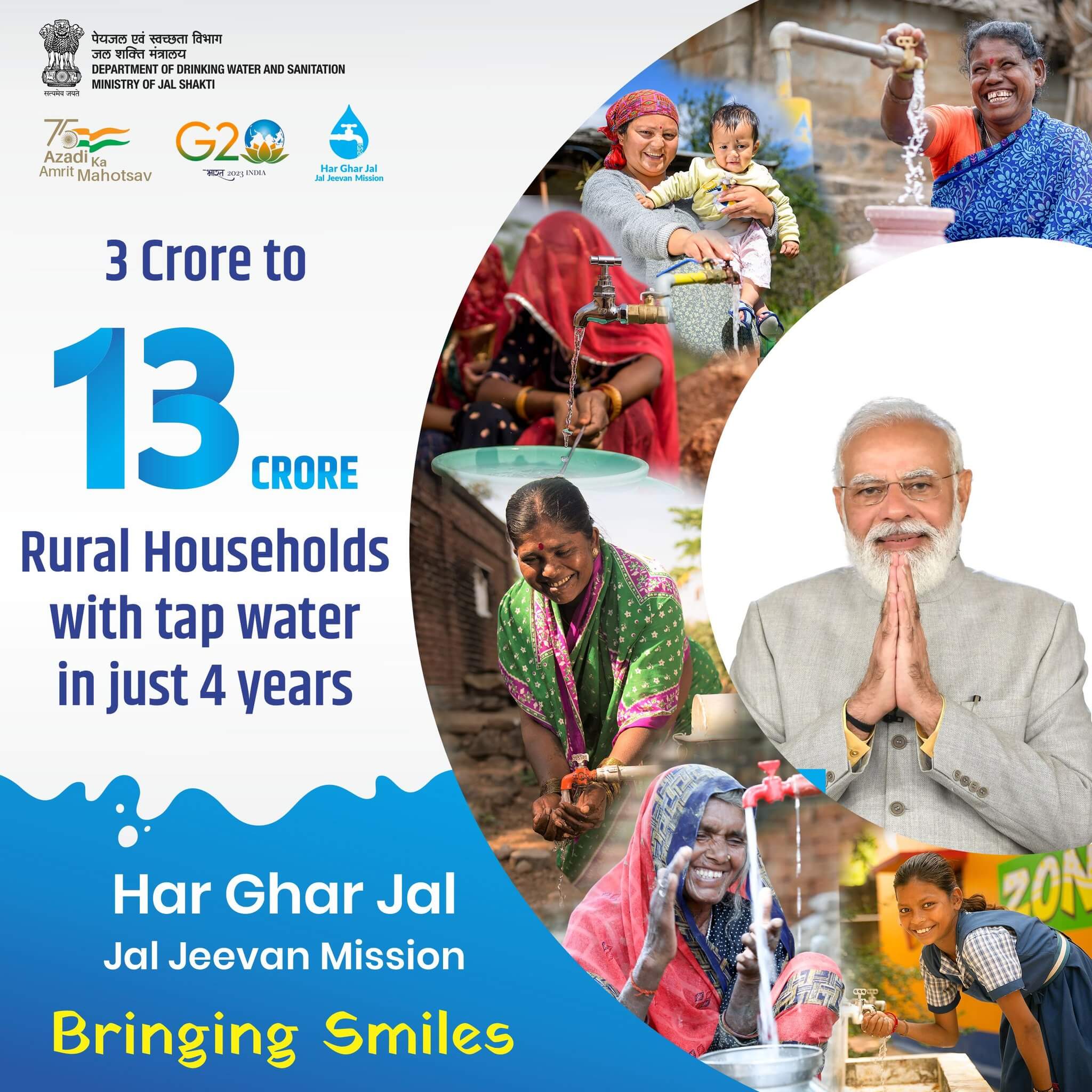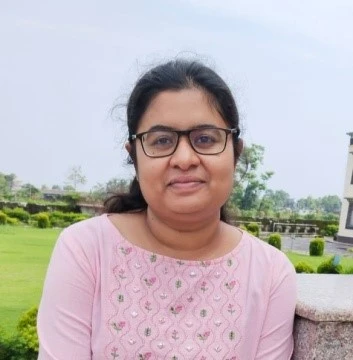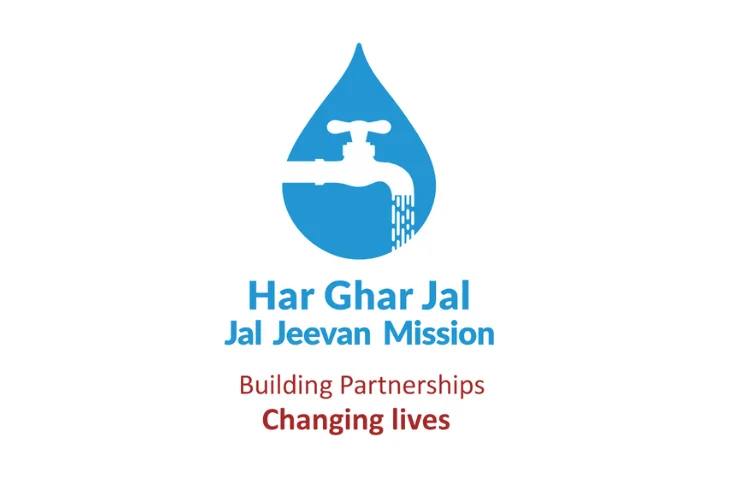The Jal Jeevan Mission (JJM) is a flagship program launched by the Government of India on 15th August 2019. The main goal of this scheme is to provide Functional Household Tap Connections (FHTC) to every rural household in India. The mission was initially set to be completed by 2024, but the deadline has been extended to 2028 to ensure thorough coverage and sustainable water management.
The mission targets providing 55 litres of safe drinking water per capita per day (LPCD) and emphasizes a community-driven approach where local residents actively participate in planning, implementation, and monitoring. The initiative is implemented by the Ministry of Jal Shakti, Department of Drinking Water and Sanitation.
Check out all the details about Independence Day
Why was the Jal Jeevan Mission Launched?
The Jal Jeevan Mission was introduced to address water scarcity, contamination, and unequal access to safe drinking water in rural India. Before the launch of JJM in 2019:
- Only 3.23 crore rural households (17%) had access to piped drinking water.
- Several villages faced drought, water quality issues, and inadequate water infrastructure.
By integrating community participation, technology, and sustainability measures, the mission aims to:
- Ensure universal access to safe drinking water.
- Promote water conservation and source sustainability.
- Empower local communities and women in water management.
- Enhance overall health, sanitation, and living standards in rural India.

Check Out: Complete List of Important Schemes for NABARD Grade A Exam
What are the Objectives of the Jal Jeevan Mission?
The main objectives of JJM are:
- Provide Functional Household Tap Connections (FHTC) to all rural households
- Prioritize quality-affected areas, drought-prone regions, desert villages, and Sansad Adarsh Gram Yojana (SAGY) villages
- Supply water to schools, Anganwadi centers, health centers, GP buildings, and community institutions
- Monitor functionality of all household taps
- Promote voluntary community ownership via cash, kind, or labor contributions
- Ensure sustainability of water supply systems, including water sources, infrastructure, and O&M funds
- Build capacity in water management, plumbing, electrical work, water quality testing, and treatment
- Create awareness about safe drinking water and hygiene
What are the Key Features of the Jal Jeevan Mission?
The mission incorporates several transformative features such as :
| Aspect | Details |
| Women and Community Participation | At least 50% women members in Village Water & Sanitation Committees (VWSC) and Pani Samitis |
| Awareness and Engagement | Public campaigns on safe water, hygiene, and community responsibility; encourages voluntary contributions and shramdaan |
| Technology Integration | Use of JJM-IMIS, IoT sensors, and real-time dashboards for monitoring water supply |
| Capacity Building and Education | Training of at least 5 individuals per village (preferably women) in water management and quality testing |
| Household-Level Focus | Shifts focus from habitations to individual households for demand-driven, community-managed water supply |
What are the Benefits of the Jal Jeevan Mission?
JJM delivers wide-ranging social, economic, and environmental benefits:
- Health and Sanitation:
- Reduces waterborne diseases by providing clean drinking water.
- Promotes better hygiene and sanitation practices.
- Women’s Empowerment:
- Reduces the time and effort spent on fetching water, allowing women to engage in education and income-generating activities.
- Economic Growth:
- Reliable water supply supports agriculture, livestock, and rural enterprises, leading to higher incomes.
- Environmental Sustainability:
- Incorporates rainwater harvesting, groundwater recharge, and greywater management.
- Encourages water conservation and resource management at the community level.
- Educational and Institutional Benefits:
- Schools, Anganwadi centers, and health institutions gain reliable water supply, improving learning and healthcare outcomes.
Get ready to crack government job exams with leading educators
How is the Jal Jeevan Mission Implemented?
JJM operates as a Centrally Sponsored Scheme (CSS) with fund sharing between the Centre and States:
- 90:10 for Himalayan and North-Eastern states (Uttarakhand, Himachal Pradesh, etc.)
- 50:50 for other states
- 100% for Union Territories
The implementation strategy emphasizes:
- Village-level planning and community participation.
- Performance-based funding linked to achievement of mission targets.
- Geo-tagging of assets and third-party inspections for transparency.
- Integration of technological solutions to monitor water quality and supply.
- Sustainability measures including O&M funds and infrastructure planning.
What are the Achievements of the Jal Jeevan Mission?
JJM has made significant progress in a short period:
- Over 15 crore rural households (around 80%) now have piped drinking water access, up from 3.23 crore in 2019.
- 100% coverage has been achieved in several states: Arunachal Pradesh, Goa, Haryana, Himachal Pradesh, Gujarat, Punjab, Telangana, Mizoram, and in UTs: Andaman & Nicobar Islands, Dadra & Nagar Haveli and Daman & Diu, Puducherry.
- Numerous schools and Anganwadi centers have received tap water supply.
- Community participation through shramdaan and voluntary contributions has strengthened local ownership of water resources.
What are the Challenges Faced by the Jal Jeevan Mission?
Key challenges include:
- Water quality issues: Contamination from iron, fluoride, salinity, and nitrates in several habitations
- Infrastructure quality: Post-pipeline restoration sometimes fails to meet standards
- Data gaps: Incomplete or unreliable data makes planning difficult
- Maintenance planning: Only 20 states had comprehensive O&M policies by 2025
- Slow execution: Delays in critical projects affect mission progress
What Steps are being taken to Enhance the Functioning of JJM?
The government has adopted multiple measures:
- Improve Infrastructure Quality: Link contractor payments to verified work and enforce restoration clauses
- Ensure Data Reliability: Conduct third-party audits, geo-tag assets, and maintain public dashboards
- Performance-based Funding: Task forces in lagging states and central assistance linked to performance
- Awareness and Water Testing: Mandatory testing by Gram Panchayats with public campaigns
- Financial Integration: Align JJM with rainwater harvesting and Atal Bhujal Yojana; revise incentives for sustainable management
- Repair & Maintenance Framework: Nationwide policy with regular reviews to ensure uninterrupted supply
Also Check: List of Government Schemes of India
How does the Jal Jeevan Mission Promote Community Participation?
Community involvement is central to the success of JJM:
- Village Water & Sanitation Committees (VWSCs) are established in every village, with at least 50% women members.
- Villagers contribute cash, labor, or kind to promote ownership of water systems.
- IEC campaigns educate the public about safe water, hygiene, and sustainability.
- Villages are encouraged to adopt water conservation measures like rainwater harvesting and greywater reuse.
How does JJM ensure Sustainability of Water Sources?
JJM emphasizes long-term water security through:
- Rainwater Harvesting: Capturing rainwater for recharge of groundwater.
- Greywater Management: Recycling wastewater for non-drinking purposes.
- Groundwater Recharge: Strengthening local aquifers.
- Water Source Augmentation: Improving existing water sources to meet growing demand.
- Operation & Maintenance Funds: Ensuring infrastructure remains functional for years.
Key Takeaways
| Aspect | Details |
| Launch Year | 2019 |
| Nodal Ministry | Department of Drinking Water and Sanitation, Ministry of Jal Shakti |
| Objective | Provide FHTC to all rural households by 2028 (revised) |
| Target Service Level | 55 litres per capita per day |
| Community Focus | 50% women participation, VWSCs, shramdaan |
| Sustainability Measures | Rainwater harvesting, greywater reuse, groundwater recharge |
| Coverage (2025) | 80% rural households, 15+ crore households |
| States Achieved 100% | Arunachal Pradesh, Goa, Haryana, Himachal Pradesh, Gujarat, Punjab, Telangana, Mizoram |
| UTs Achieved 100% | Andaman & Nicobar Islands, Dadra & Nagar Haveli & Daman Diu, Puducherry |
| Monitoring Tools | Geo-tagging, third-party audits, JJM-IMIS, dashboards |
Questions Based on Jal Jeevan Mission
What is the primary goal of the Jal Jeevan Mission?
- A) Improve agriculture
- B) Provide functional tap water connections to rural households
- C) Promote urban water supply
- D) Reduce urban water pollution
- E) Install water meters
Which ministry implements JJM?
- A) Ministry of Health
- B) Ministry of Water Resources
- C) Ministry of Jal Shakti
- D) Ministry of Rural Development
- E) Ministry of Urban Development
By 2025, approximately how many rural households received tap water under JJM?
- A) 3 crore
- B) 8 crore
- C) 12 crore
- D) 15 crore
- E) 20 crore
What is the target per capita water supply under JJM?
- A) 45 LPCD
- B) 50 LPCD
- C) 55 LPCD
- D) 60 LPCD
- E) 65 LPCD
Which of the following is NOT a feature of JJM?
- A) Community participation
- B) Technological interventions
- C) Rainwater harvesting
- D) Urban sewerage management
- E) Capacity building
What percentage of women must be part of Village Water & Sanitation Committees?
- A) 25%
- B) 40%
- C) 50%
- D) 60%
- E) 75%
Which states achieved 100% coverage under JJM?
- A) Goa, Telangana, Mizoram
- B) Rajasthan, Bihar, Odisha
- C) Uttar Pradesh, Maharashtra, Gujarat
- D) Karnataka, Kerala, Tamil Nadu
- E) Madhya Pradesh, Chhattisgarh, Haryana
Which program is aligned with JJM for groundwater sustainability?
- A) PM-KUSUM
- B) Atal Bhujal Yojana
- C) National Solar Mission
- D) Smart Cities Mission
- E) PM Awas Yojana
What is the main challenge related to water sources in JJM?
- A) Overuse of water in cities
- B) Sustainability and contamination of rural sources
- C) Urban sewerage discharge
- D) Industrial water pollution
- E) Tourism-related water shortage
When was the Jal Jeevan Mission launched?
- A) 2017
- B) 2018
- C) 2019
- D) 2020
- E) 2021
Also Read:
Answer Key
| Question Number | Answer | Question Number | Answer |
| 1 | B | 6 | C |
| 2 | C | 7 | A |
| 3 | D | 8 | B |
| 4 | C | 9 | B |
| 5 | D | 10 | C |
- MISHTI Scheme, India’s Initiative to Restore Mangrove Ecosystems
- National Green Hydrogen Mission Features, Objectives, and Benefits
- Paramparagat Krishi Vikas Yojana, Transforming India’s Organic Farming
- Mission on Integrated Development of Horticulture NHM and HMNEH
- Swachh Bharat Mission, India’s Journey Towards Cleanliness and Hygiene
- SAGY, A Step Towards Holistic Development of Indian Villages

Hello, I’m Aditi, the creative mind behind the words at Oliveboard. As a content writer specializing in state-level exams, my mission is to unravel the complexities of exam information, ensuring aspiring candidates find clarity and confidence. Having walked the path of an aspirant myself, I bring a unique perspective to my work, crafting accessible content on Exam Notifications, Admit Cards, and Results.
At Oliveboard, I play a crucial role in empowering candidates throughout their exam journey. My dedication lies in making the seemingly daunting process not only understandable but also rewarding. Join me as I break down barriers in exam preparation, providing timely insights and valuable resources. Let’s navigate the path to success together, one well-informed step at a time.
